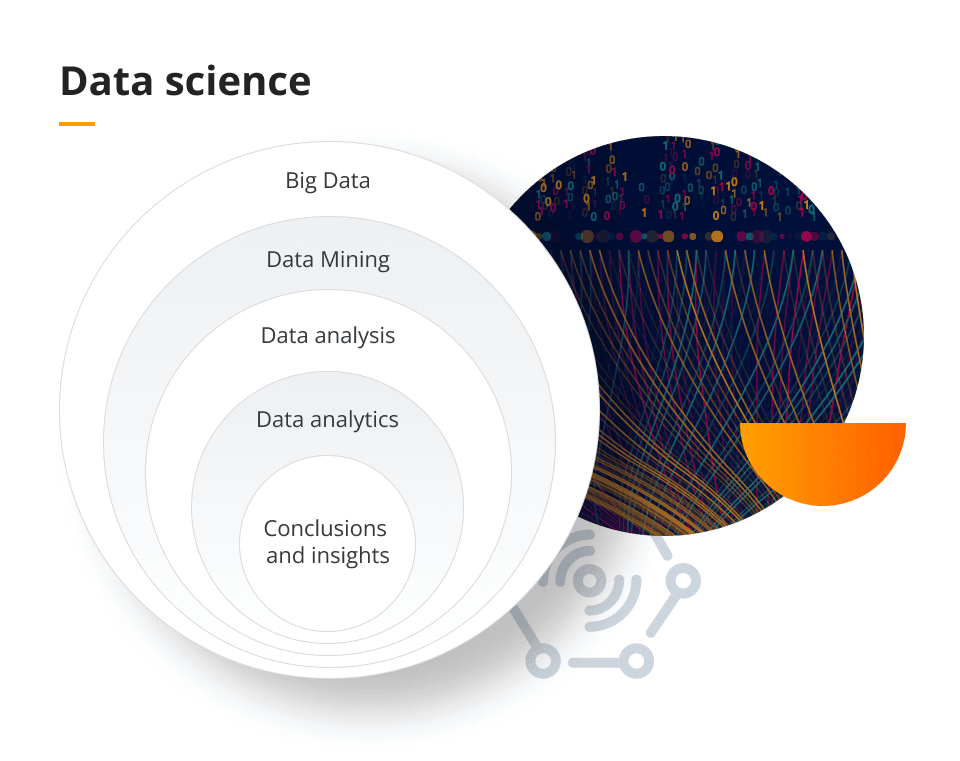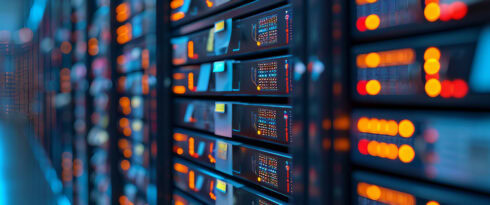
Data science and data analytics – know the difference
The incredible amount of data that is being created on a daily basis is staggering. But data alone is useless - it needs to be organised, analysed and cleaned. These days, companies understand the value of big data in their operations, which has lead us to a new age of information. Understanding how to use all this data is a relatively new science, but one that will help propel us into the future.
There were 5 exabytes of information created between the dawn of civilisation through 2003, but that much information is now created every two days.Eric SchmidtExecutive Chairman, Google
What is data science?
Data science is a multidisciplinary field focusing primarily on data. It seeks to study data, both raw and structured, to gain actionable insights. The main goal of data science is to sift through huge amounts of data and to pose questions which allow data scientists to obtain answers that can be used to help drive their organisation forwards.
Data science is varied and complex. It uses a number of techniques, such as machine learning, statistics and predictive analysis, to achieve pre-defined goals. The goal is to find answers and solutions to problems that have not yet occurred, saving companies time and money in the long run.
The job of a data scientist is to create questions which help to structure the data in front of them. This helps to uncover potential pathways through the large swathes of information to help them find answers. Data scientists aim to predict trends, explore previously disconnected data sources and analyse the information effectively.
Without data, you’re just another person with an opinion.W. Edwards DemingStatistician, Professor, Author, Lecturer, Consultant
A good data scientist maintains oversight throughout their company, as well as monitoring internal and external factors that affect how the company operates. The results gained from their analysis help to identify new business opportunities that the company could explore.
Data science is concerned with many complex, interlinked tasks. These could be in the form of creating algorithms, data modelling, implementing new data structures, and managing large teams for collaboration with upper management and stakeholders. Data scientists focus on the “big picture” information relating to long-term strategy.
What is data analytics?
Data analytics is concerned with existing datasets. It seeks to process and carry out statistical analysis of these datasets, coming up with methods to obtain, process and organise the data in order to gain insights into current problems and offer actionable solutions.
Data analytics aims to present these data findings in the clearest way possible in order to provide answers to questions that the company doesn’t know the answers to. Specifically, the goal of data analytics is to offer results that can be actioned to achieve immediate, short-term improvements.
An example task for a data analyst could be identifying a specific product feature that appeals to the company’s customers. They would use existing datasets to research market spend and how it improves conversion rates, with the results being used to help target the product feature more effectively.
Data analysts tend to work in “niches”, understanding a narrower, but highly specialised, area of a business. They generally don’t work on the “big picture” tasks and commonly operate in a single department.
Is data analytics a part of data science?
To understand how data science and data analytics relate to each other, we need to step back and look at the bigger picture.
Data science is an umbrella term for any operation with the aim of comprehending data. It encompasses everything: big data, data mining, data analysis and data analytics.
Data analytics is a subset of data science. There are a number of similarities and differences regarding their focus, methods and goals.
Data science and data analytics: Similarities
Both data science and data analytics are used to help the decision-making process in order to understand a company’s operations. Both data scientists and data analysts deal with massive amounts of data. These huge databases need to be organised, structured and maintained in order to gain accurate insights.
Both fields are highly technical, requiring both statistical and programming skills, and both necessitate highly analytical specialists who are adept at problem-solving and project management.
Both data scientists and data analysts work with colleagues across a range of departments who may not necessarily have any technical expertise. They must collate and present their findings in a clear and understandable manner, so that their colleagues can easily understand the information they are demonstrating.
Data science and data analytics: Differences
The main difference between data science and data analytics is the scope of their work.
The data scientist’s focus is much broader, as they are concerned with the “big picture” stuff. Whereas, a data analyst is more concerned with problems that are narrower in scope, more short-term and potentially specific to one particular department or project.
Data scientists make predictions, they identify any potential problems that may occur, and they drive the company’s overall strategy. Using the data they gather to understand what may happen in the future, they are not focused on specific issues or finding answers to specific questions.
Data analysts use existing datasets to spot trends, solve problems, and focus on narrower, more specific questions which affect a particular element of a business.
Data scientists use algorithms and machine learning in order to achieve their business goals, whereas data analysts will collect and maintain data that they can later analyse to achieve their goals.
A data scientist starts with a blank page and then uses their data to create questions, determining the best way to go about finding the answers. A data analyst receives those questions from the data scientist and uses analysis to help them provide the answers.
Which is better: data science or data analytics?
The short answer is, neither. Both data science and data analytics are two sides of the same coin. They are symbiotic; you cannot have one without the other.
If a company were to be highly focused on data science and negate data analytics, they would be left with lots of great questions, they would have some fantastic long-term goals and understand the approximate direction to head in, but they would then become stuck when the time came to actually implement those changes.
If a company were to be highly focused on data analytics and less so on data science, they would fall down at the first hurdle. The data analyst would not have access to the data they needed, as it wouldn’t have been collated and organised yet. Even if they were to access previously existing datasets from somewhere, they would then trip up when it came to knowing which questions they need to find the answers to and how to go about it. The data analysts would have no focus, so the process simply wouldn’t work.
Data analytics cannot exist without data science, and data science is simply an unactionable theory without data analytics. In order for a company to be successful, it’s important they embrace both of these disciplines.






